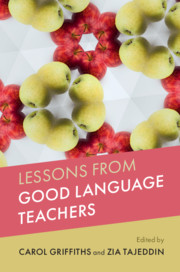Book contents
- Lessons from Good Language Teachers
- Lessons from Good Language Teachers
- Copyright page
- Contents
- Figures
- Tables
- Contributors
- Foreword
- Preface An Overview of Good Language Teachers
- Part I Macro Perspectives
- Part II Classroom Perspectives
- Part III Instructional Perspectives
- 15 Pragmatics and Good Language Teachers
- 16 Vocabulary and Good Language Teachers
- 17 Grammar and Good Language Teachers
- 18 Pronunciation and Good Language Teachers
- 19 Listening and Good Language Teachers
- 20 Speaking and Good Language Teachers
- 21 Reading and Good Language Teachers
- 22 Writing and Good Language Teachers
- Good Language Teachers: Past, Present, and Future Directions
- Epilogue Good Language Teachers – What Do They Do? What Do They Know?
- Index
- References
17 - Grammar and Good Language Teachers
from Part III - Instructional Perspectives
Published online by Cambridge University Press: 22 April 2020
- Lessons from Good Language Teachers
- Lessons from Good Language Teachers
- Copyright page
- Contents
- Figures
- Tables
- Contributors
- Foreword
- Preface An Overview of Good Language Teachers
- Part I Macro Perspectives
- Part II Classroom Perspectives
- Part III Instructional Perspectives
- 15 Pragmatics and Good Language Teachers
- 16 Vocabulary and Good Language Teachers
- 17 Grammar and Good Language Teachers
- 18 Pronunciation and Good Language Teachers
- 19 Listening and Good Language Teachers
- 20 Speaking and Good Language Teachers
- 21 Reading and Good Language Teachers
- 22 Writing and Good Language Teachers
- Good Language Teachers: Past, Present, and Future Directions
- Epilogue Good Language Teachers – What Do They Do? What Do They Know?
- Index
- References
Summary
Chapter 17 describes effective grammar instruction and examines the instructional practices of six teachers involved in grammar courses. The results indicate that teachers have at their disposal a number of instructional options and the effectiveness of these options is mediated by individual, linguistic, and contextual variables.
Keywords
- Type
- Chapter
- Information
- Lessons from Good Language Teachers , pp. 219 - 231Publisher: Cambridge University PressPrint publication year: 2020
References
- 6
- Cited by

